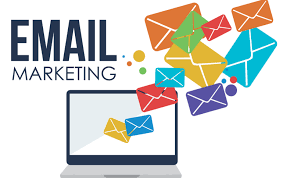What is an email blast?
An email blast is a mass email sent to a large number of recipients at once. Email blasts are often used for marketing purposes, such as announcing new products or services, promoting special offers, or sharing news and updates. They can also be used for non-marketing purposes, such as sending out company-wide announcements or emergency alerts.
Benefits of using email blasts
Email blasts offer a number of benefits, including:
- Cost-effectiveness: Email blasts are a relatively inexpensive way to reach a large number of people at once.
- Speed: Email blasts can be sent out quickly and easily, which is ideal for time-sensitive announcements or promotions.
- Scalability: Email blasts can be sent to any number of recipients, from a few dozen to millions.
- Measurability: Email blasts can be tracked to measure open rates, click-through rates, and other metrics, which can help you to improve your future campaigns.
How to create an effective email blast
To create an effective email blast, it is important to follow these tips:
- Segment your list: Don’t send the same email blast to everyone on your list. Instead, segment your list based on demographics, interests, or other factors so that you can send more targeted and relevant messages.
- Write a compelling subject line: The subject line is the first thing people will see, so make sure it is clear, concise, and attention-grabbing.
- Personalize your emails: People are more likely to open and read emails that are personalized to them. Use their names in the subject line and throughout the email, and include content that is relevant to their interests.
- Make it easy to read and scan: Use short paragraphs, bullet points, and white space to make your emails easy to read and scan. Avoid using too much text or images, as this can make your emails look cluttered and overwhelming.
- Include a clear call to action: Tell your recipients what you want them to do after reading your email. This could be clicking on a link, visiting your website, or making a purchase.
Best practices for sending email blasts
Here are some best practices for sending email blasts:
- Get permission: Only send email blasts to people who have given you permission to do so. You can do this by having people sign up for your email list on your website or landing page.
- Don’t overuse email blasts: Don’t send email blasts too often, or your subscribers will unsubscribe from your list. A good rule of thumb is to send no more than one email blast per week.
- Keep your emails clean and concise: Avoid sending long, rambling emails. Instead, focus on getting your message across in a clear and concise way.
- Test your emails before you send them: Always test your emails before you send them to make sure that they look good and work properly on all devices.
- Track your results: Track the results of your email blasts to measure open rates, click-through rates, and other metrics. This data can help you to improve your future campaigns.
Conclusion
Email blasts can be a powerful tool for reaching a large number of people at once. However, it is important to use them wisely and follow best practices to ensure that your emails are effective and well-received.
Visit the website and more information: marediasoft.com

